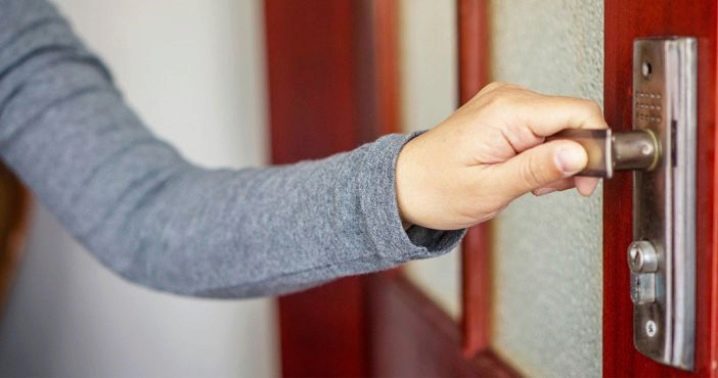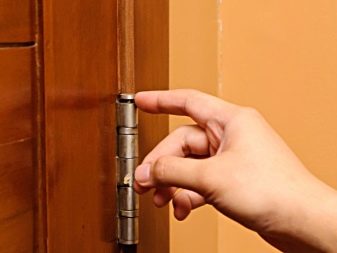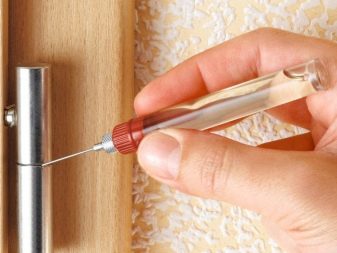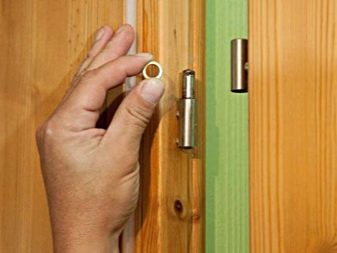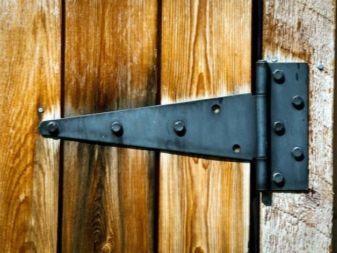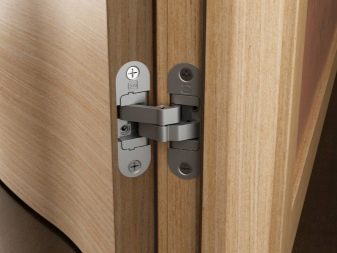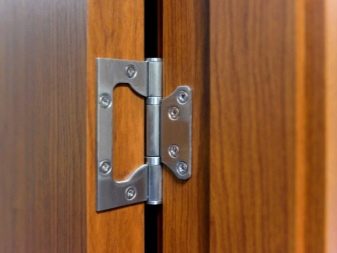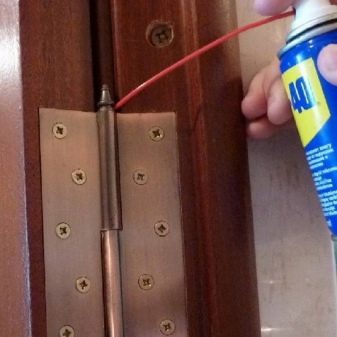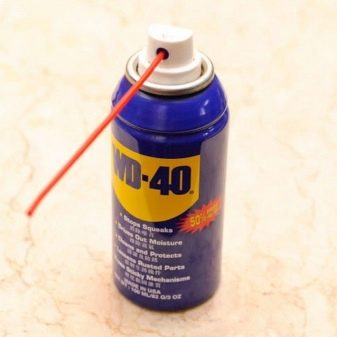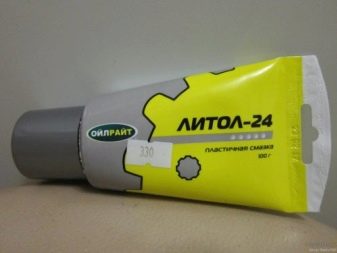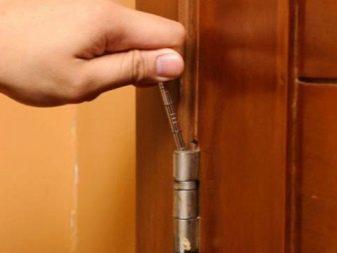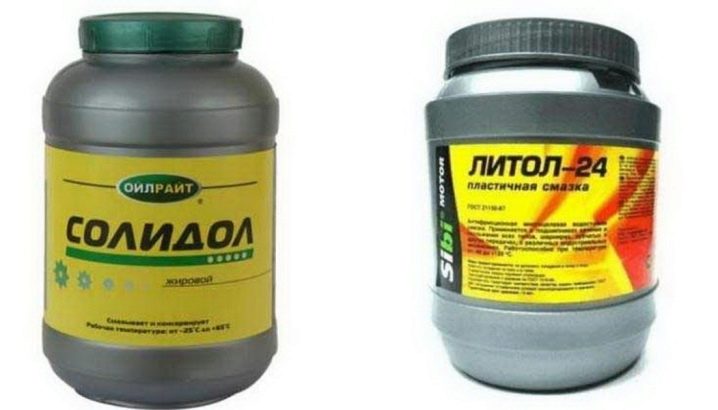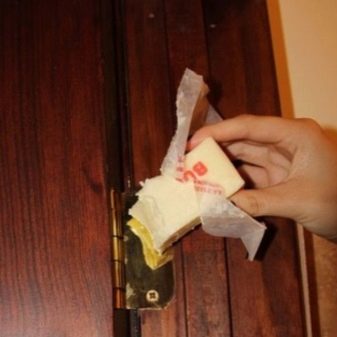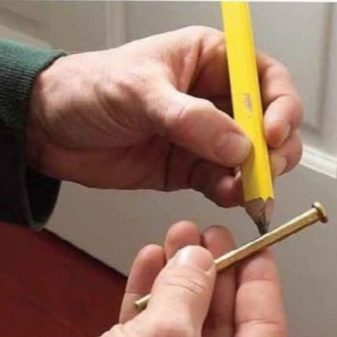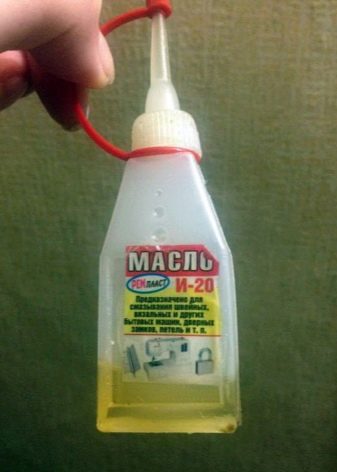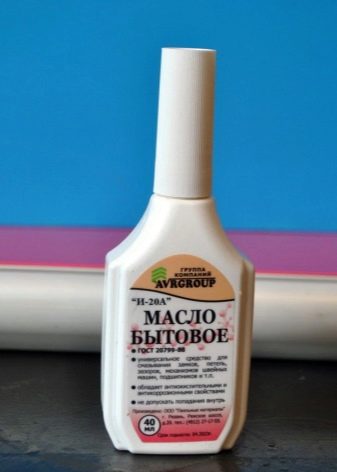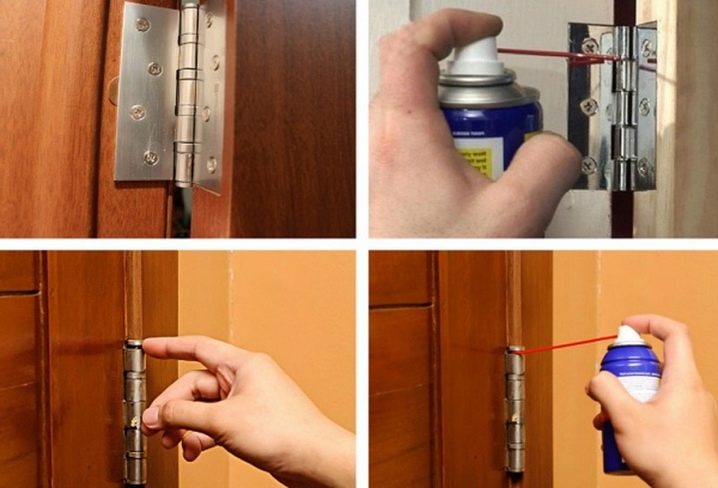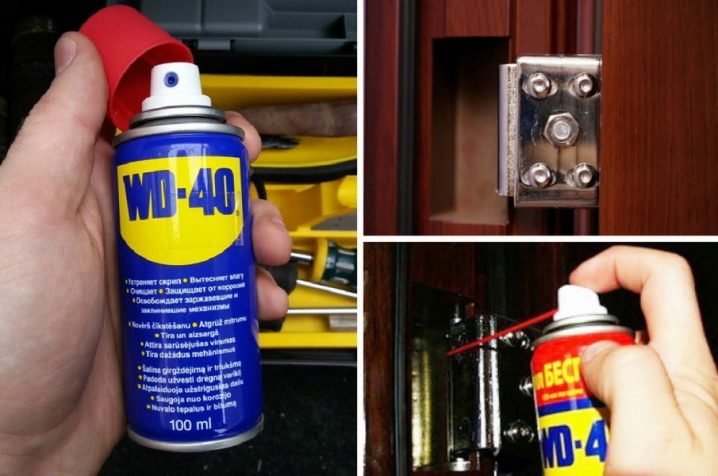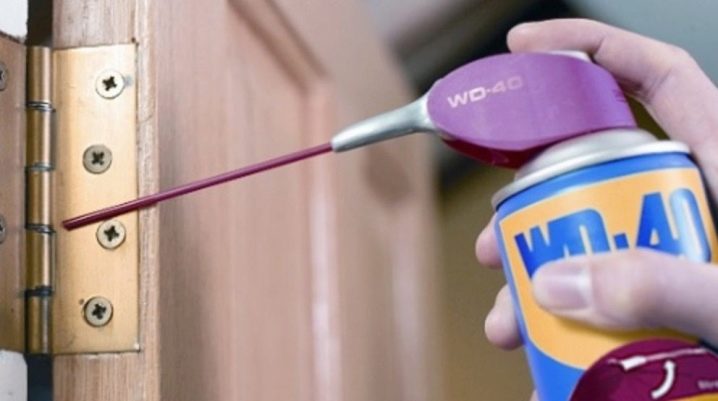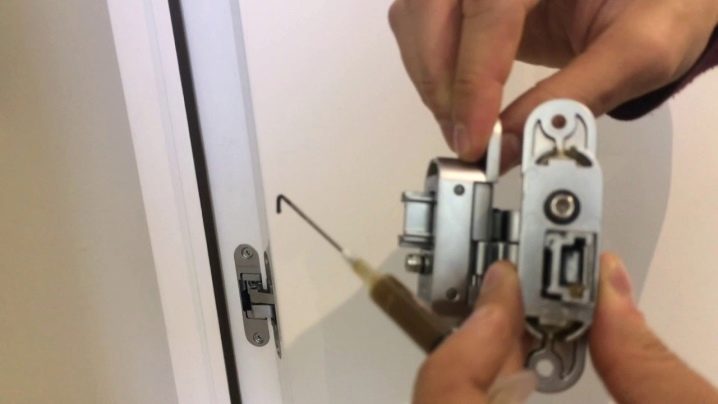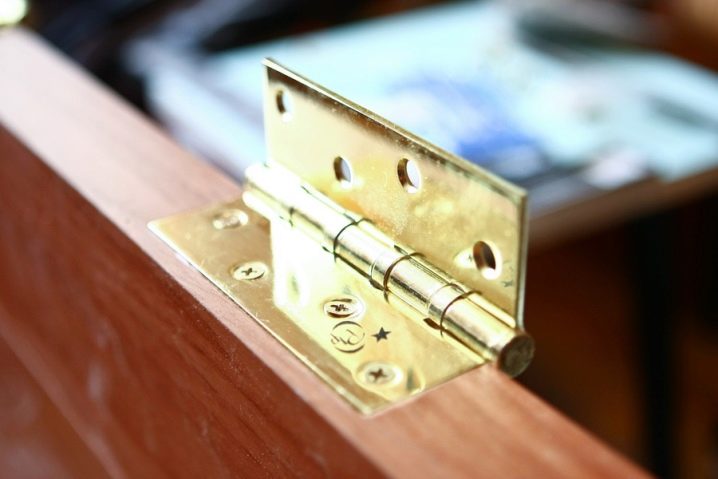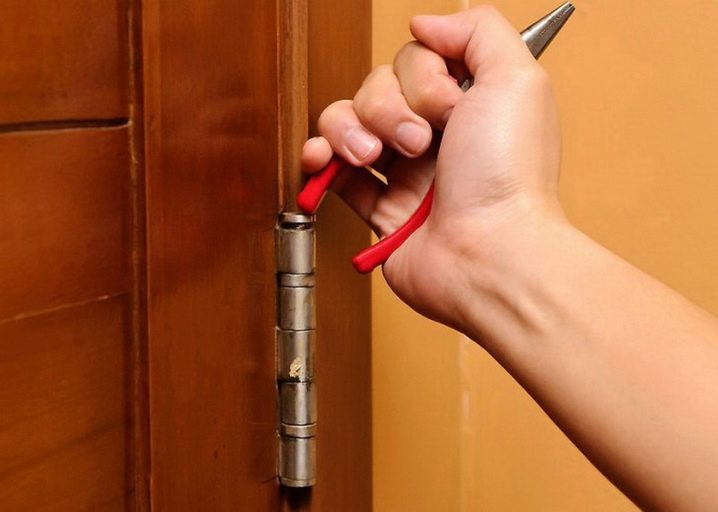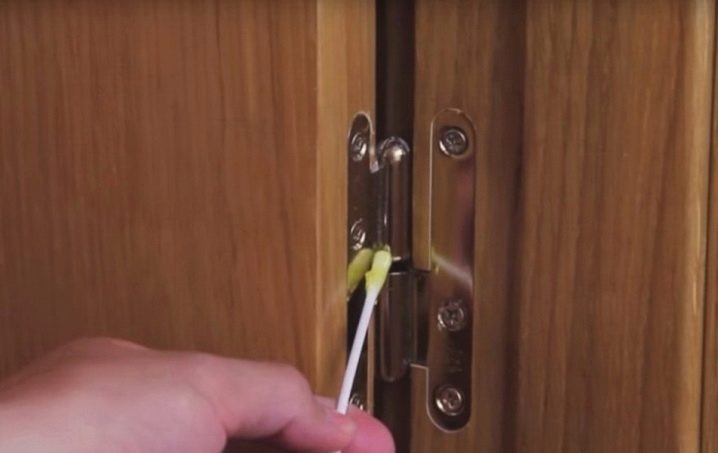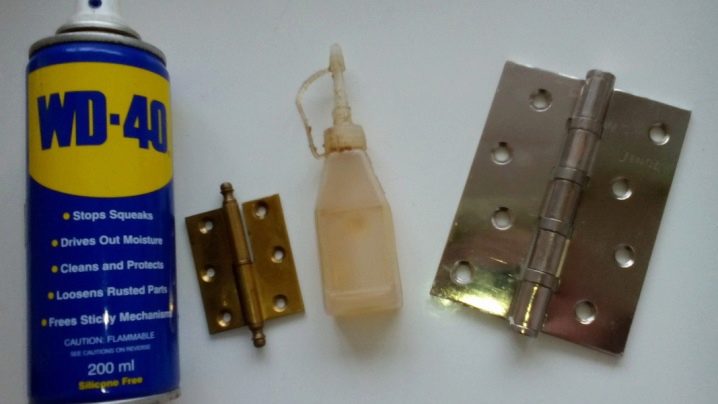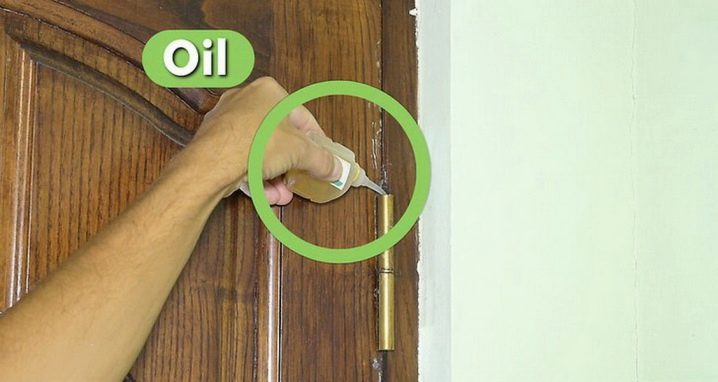What and how to lubricate the door hinges so that they do not creak?
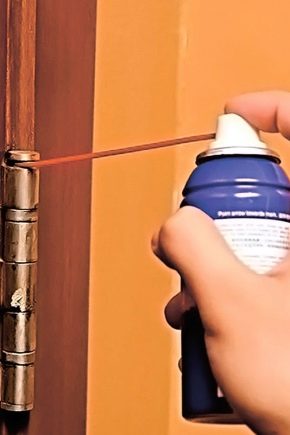
The creaking of the hinges accelerates their wear and irritates hearing and nerves. With proper care of the door fittings, the design will remain suitable for use longer. And inaction in such a situation in the future will lead to breakage and replacement of loops. It is much easier and cheaper to take care of them in a timely manner. Regular lubrication will help avoid problems and prolong their service for a longer period.
Why do loops creak?
Creak door hinges begin for various reasons. It is important to monitor their condition in order to avoid further wear. The main problems that cause the emergence of squeak are as follows.
- Insufficient lubrication. Over time, the lubricant expires. It thickens, spreads or dries, blocking the normal course of the door, which has a devastating effect on the mechanism.
- Corrosion. The most common cause of squeak hinges on street doors. All because of the increased humidity, which is transferred not all metal elements of the door structure. If you do not take measures against rust, the movement of the canvas is gradually hampered, and the iron is destroyed.
- Wear parts. Prolonged or improper operation of the door structure and its accessories leads to wear and tear of the mechanism.
- Pollution. Dust and small debris often accumulate in the hinge space. If you do nothing, dirt accumulates in the grease, gets on the hinges of the hinges and begins to gradually grind down the metal like an abrasive.
- Skewing the door. If the door leaf is massive or an error has been made during the installation of the structure, it can be skewed. This is not only detrimental to fittings, but also leads to even more loosening of the box itself and changing the contours of the canvas. Usually, the consequences of a non-professional installation make themselves felt in the very first days of operation of the door structure.
The most common flaws during installation, leading to unpleasant consequences: misalignment of the assembled structure, incorrect or fragile installation of hinges, friction of the sheet against the casing, box or casing. The conclusion suggests itself: the creaking of the door suggests that you need to immediately understand the reason for its appearance.
Choosing a lubricant
Before you begin to establish a normal and silent course of the door leaf, you need to understand what kind of lubricant is suitable for this. On sale there are various special compositions that are suitable for street or interior doors. The most popular are the following ready-made products.
- WD 40. Very running and effective oil material, allowing not only to get rid of squeak and improve the sliding of metal parts, but also to remove corrosion. The tool creates on the treated surfaces a protective film that prevents the further spread of rust.
- Litol. The perfect kind of grease from the squeak for the entrance metal door. Thanks to its water resistance and frost resistance, it can be used in outdoor conditions. The most suitable option for the prevention of corrosion on the hinges of all external doors, gates and garage doors.
- Solid oil. Oily, viscous in consistency mass, one of the most practical materials. Suitable for lubrication of moving parts in mechanisms.
- Ciatim Universal remedy in the form of a thick oil with an antioxidant additive.
If you did not have a factory tool for lubricating metal parts, you can try one of the "folk" tools. In the youth of our grandfathers, Litol and WD were absent, but they knew how to cope with the problem of squeaking with elementary improvised means.
- A simple pencil. The slate pencil was crushed and poured into loops or lifted the door leaf and put a piece directly into the mechanism, and he himself crushed it into powder. The wax and oil in the slate effectively helped to get rid of the annoying squeak.
- Liquid soap. This is a more modern tool for lubricating door hinges. It is always at home in stock. One drop of a viscous concentrate is enough, and the course of the web will become smoother and silent. It helps for a while, but there is always the opportunity to repeat the treatment.
- Wax. In the house there is always a candle that can be used not only for lighting, but also to improve the slip of worn mechanisms.
- Sunflower oil. Any vegetable fat from the kitchen of the hostess will help eliminate the creak of the metal for a short time. Even a teenager can manipulate vegetable oil. Special skills and instructions for lubrication are required. But this method is considered temporary, as dust quickly adheres to sunflower oil. The resulting dirt will quickly lead to wear of the mechanism.
- Engine oil and working them. A better option for car owners. Such lubricant they always have in stock.
- Oil for processing parts of a sewing machine. Needlewomen know that such a tool well lubricates all moving mechanisms. Plus is the absence of greasy traces and ease of application. In the apartment, such accuracy does not hurt.
- Vaseline. If none of the above is available, ordinary petroleum jelly is suitable for lubricating metal. This, of course, is a temporary measure of “taming” the squeak until a special tool can be obtained and the loop is rehabilitated as it should be.
How to properly lubricate?
The final result depends on the technique of applying a lubricant no less than by what means it is carried out. The hinges need to be able to lubricate properly so that they do not creak.The composition applied to the desired area will help solve the problem qualitatively and without hassle. This will help avoid subsequent contamination of the mechanism and prolong its service life. It is necessary to clarify certain rules regarding the process of lubrication of any door hinges.
- The tool must be applied using a special oil can, using a nozzle with a thin tube or a medical syringe.
- If the loops are disassembled, you can treat them with a thin brush or a cotton swab, lubricated with grease. Cloth is less convenient for lubrication.
- In order not to dirty the doors with excess oil, you need to use a dry paper napkin.
- When the door creaks in a particular place, this section needs more intensive processing. It is easy to find on the external tracks of abrasion.
- The inner part of the hinges needs more generous oil treatment, since it is the working part of the mechanism that is subject to wear.
To process the universal hinges, without removing the door, you need to find a suitable lubricant and a bottle with a thin spout. If the product is already packaged in this way, you can get down to business right away.In another case, it is necessary to carefully pour the oil composition into a convenient container. The lubricant should easily penetrate the dust and cover with a protective film all the working parts of the loop mechanism.
It is convenient to use the tool in the form of a spray. Silicone and lithium greases are no less convenient. The last of them is sold in all auto shops and is perfect for processing all creaky and metal. This method is very convenient for someone who is not able to lift a heavy door leaf. A lubricant is applied between the hinges, gently filling the gap with it.
The second way to lubricate the hinges on the door is more troublesome. Suitable for split loops. We'll have to remove the canvas, lifting it with scrap. Put it on top of two stable chairs and carry out processing according to the recommendations. In this position, it is much more convenient to inspect the hinges, especially if you have to disassemble or repair them.
Prepare unnecessary old rags in advance. Be sure to dry and clean to wipe excess oily grease and clean contaminated sites. They must be cleaned before they are treated with a lubricant. Otherwise, all the effort expended will be in vain.Abrasive particles with a new batch of grease will harm the loops even more actively. After lubrication, the door leaf must be hung in place.
Tips
It should be noted that the process of processing hinges is the same for any doors, regardless of whether they are interior, metal, street or balcony. The processing plan may vary depending on the type of loops.
- For the time being, “stirring” the tight loops will help any edible oil: olive, coconut, etc.
- The loop design consists of two cards connected by a rod. It will be correct to pull the rod out of the mechanism in order to lubricate it more effectively.
- Open the doors and remove the rod to either side. You can do it just with your fingers, but it is more convenient to use pliers by turning the rod counterclockwise. Try not to rub the skin of your fingers on the door jamb or canvas.
- If the metal rod is rusted and difficult to pull out, there are two options for help: a screwdriver or a special corrosion converter. With the tool is usually easier for the simple reason that it is always available.
- After removing the rod, you need to apply a thin layer of grease on it,and then carry out the loop processing. It is convenient to do this with a spray bottle or from a bottle with a long thin spout.
- Check the door travel. If the squeak continues, remove the rod from the mechanism and apply an additional portion of lubricant. Continue until the squeak stops. When the desired result is obtained, reinstall the rod.
- Use a clean rag or a disposable paper towel to remove dirt. Excess oil must be removed immediately, so that no further dust accumulates on them.
- Rusty hinges must be treated with a ready-made rust converter before attempting to pull out the core. If there is no transducer, a WD-40 spray is suitable for easier removal of the rod.
- You should not try to knock the jammed rod with a hammer blow, if the rust is too ingrained in the metal. There is a chance to damage the doors and mechanism, adding to their problems.
- Carefully pry the rod with a screwdriver after it has been lubricated for a while. He must dutifully get out of the loop.
- Use a sturdy metal object for convenient pushing through the rod. For example, tweezers, knitting needles or any tool of smaller diameter than the loop.
- As necessary, you will have to repair the rod. If it is rusty or bent, it must be additionally treated against corrosion or straightened. In this case, the hammer will not be superfluous. Put the rod on the concrete surface and try to hit it so that the metal is leveled, but not damaged even more.
- Rusty plaque can be sanded with sandpaper.
- Grease should be applied, starting with a small amount, adding oil as necessary.
- Work spend in gloves.
If the hinges on the doors are too worn and rusty, it is better to try to replace them with new ones. And further to prevent a similar situation, regularly taking preventive measures.
How to lubricate the door hinges so that they do not creak, see the following video.
